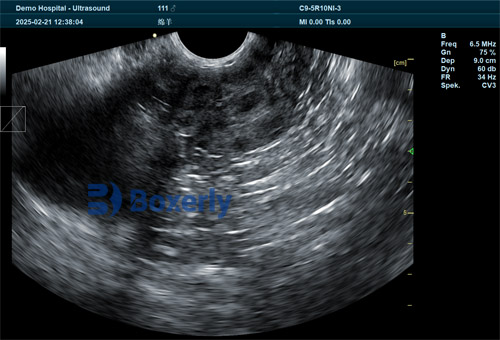Understanding Fetal Growth Patterns in Sheep Facing Nutritional Stress
As a livestock farmer or veterinarian working with sheep, monitoring fetal growth accurately is essential for ensuring healthy pregnancies and optimal lambing outcomes. Fetal development is a dynamic and sensitive process, heavily influenced by the ewe’s nutritional status. In recent years, veterinary ultrasound technology has become an indispensable tool to evaluate fetal growth patterns non-invasively, especially in cases where nutritional stress threatens normal development.
この記事の内容, I will explore how veterinary ultrasound technology is used to assess fetal growth in sheep subjected to nutritional stress, explain the implications of compromised nutrition on fetal development, and highlight why ultrasound is vital for early detection and intervention. This approach incorporates insights from international research and practical applications worldwide, reflecting a growing global understanding of fetal monitoring in small ruminants.

The Importance of Monitoring Fetal Growth in Sheep
Sheep production depends heavily on reproductive success and the birth of healthy lambs. Fetal growth monitoring helps detect intrauterine growth restriction (IUGR), which can lead to low birth weight, higher neonatal mortality, and poorer postnatal performance. Nutritional stress, whether due to inadequate feed quality, quantity, or imbalanced diets, is one of the primary causes of impaired fetal growth.
Across sheep-producing regions globally—from arid Australia to temperate Europe—farmers and veterinarians increasingly rely on 動物用超音波検査 to monitor pregnancies. Understanding fetal growth trajectories allows adjustments in ewe management, nutrition, and medical intervention to improve outcomes.
How Nutritional Stress Affects Fetal Development in Sheep
Fetal development in sheep follows a highly orchestrated pattern involving cellular growth, differentiation, and organogenesis. The ewe’s nutrition directly influences the supply of essential nutrients and oxygen via the placenta. Nutritional stress disrupts this supply chain, leading to:
-
Reduced placental growth and function
-
Altered hormone levels affecting fetal metabolism
-
Compromised muscle and organ development
-
Increased risk of fetal mortality or weak lambs at birth
International studies demonstrate that undernutrition during early to mid-gestation has a more detrimental effect than in late gestation. This period is critical for placental development and formation of muscle fibers in the fetus. Consequently, fetal growth restriction is often visible in ultrasound scans from the second trimester onward.
Veterinary Ultrasound Technology: A Window Into Fetal Growth
Ultrasound technology, particularly B-mode ultrasound, provides a non-invasive, real-time imaging method to assess fetal size, 解剖学, and growth rates. Unlike palpation or external observation, ultrasound delivers quantitative data on fetal development that can be monitored repeatedly with no risk to ewe or fetus.
Key fetal parameters measured by veterinary ultrasound in sheep include:
-
Crown-rump length (CRL): Reflects overall fetal size in early pregnancy
-
Biparietal diameter (BPD): Measures fetal head width, correlating with gestational age
-
Femur length (FL): Indicates skeletal growth
-
Abdominal circumference (AC): Used to assess fetal growth and nutritional status
-
Heart rate and amniotic fluid volume: Indicate fetal well-being
These parameters help veterinarians and farmers detect deviations from normal growth curves, signaling potential nutritional stress or other issues.

International Perspectives on Using Ultrasound for Fetal Assessment in Sheep
In countries with advanced sheep industries like New Zealand, the UK, and Spain, research and practical applications have demonstrated the effectiveness of ultrasound for fetal monitoring under nutritional constraints.
例えば, ある 2020 study in New Zealand found that pregnant ewes subjected to controlled feed restriction showed significantly reduced fetal BPD and FL measurements from mid-gestation, confirming that ultrasound can detect subtle growth delays early. Similarly, UK researchers have integrated ultrasound into routine pregnancy checks to optimize nutritional plans for ewes based on fetal growth status.
Spanish sheep producers have adopted ultrasound monitoring to reduce lamb mortality rates associated with poor maternal nutrition, demonstrating how technology adoption in traditional farming communities improves herd productivity.
Practical Implementation: Using Ultrasound to Manage Nutritional Stress on Farms
On a typical sheep farm, veterinary ultrasound is used during mid to late pregnancy (60–120 days gestation) when fetal size and anatomy are sufficiently developed to measure. The procedure is simple:
-
The ewe is restrained comfortably, and the transducer is placed on the shaved flank or via transrectal scanning in early pregnancy.
-
Real-time images are captured, measuring key fetal growth parameters.
-
Data are recorded and compared with established fetal growth charts to identify growth restriction.
If ultrasound detects fetal growth retardation, the farmer or veterinarian can take corrective actions, とか:
-
Improving ewe feed quality and energy density
-
Supplementing critical nutrients (protein, vitamins, minerals)
-
Managing ewe stress and health issues impacting nutrition
-
Monitoring ewes more frequently to track improvements
This proactive management reduces the incidence of weak or stillborn lambs, improves lamb birth weights, and increases survival rates.
Advantages of Ultrasound in Fetal Growth Monitoring Under Nutritional Stress
Veterinary ultrasound offers several advantages that align with the challenges posed by nutritional stress:
-
Non-invasive and stress-free: Unlike other diagnostic methods, ultrasound is safe and painless, allowing repeat assessments without harming ewes or fetuses.
-
Accurate and quantitative: Provides precise measurements that help differentiate between normal and compromised growth.
-
Early detection: Enables identification of growth issues before clinical signs appear, facilitating timely nutritional or medical intervention.
-
Cost-effective: Although equipment and training involve upfront costs, the improved lamb survival and productivity yield long-term economic benefits.
-
Versatile: Applicable across breeds, production systems, and nutritional conditions worldwide.
Case Study: Applying Ultrasound in Nutritionally Stressed Flocks
A practical example comes from a commercial sheep farm in southern Spain. Facing a prolonged drought and reduced pasture availability, the farmer observed increased lamb mortality and weak newborns.
Partnering with a veterinary ultrasound technician, the farm implemented routine fetal growth scans at 70 そして 100 days gestation. The ultrasound data revealed widespread fetal growth restriction correlating with poor ewe body condition scores.
Based on these insights, the farm enhanced feed supplementation with energy-rich concentrates and minerals tailored to pregnant ewes. Follow-up ultrasounds showed significant improvement in fetal growth parameters, and lambing outcomes improved dramatically with increased birth weights and survival rates.
This example highlights ultrasound’s role in transforming nutritional management during pregnancy to protect fetal development and farm profitability.
Challenges and Limitations
Despite its advantages, veterinary ultrasound technology faces some challenges in widespread adoption:
-
Equipment cost and training: High-quality ultrasound machines and skilled operators are required for accurate fetal measurements.
-
Operator dependency: Ultrasound results depend heavily on the skill of the technician and quality of the images obtained.
-
Variability in growth charts: Breed-specific and regional differences require customized fetal growth standards to interpret data accurately.
-
Nutritional stress complexity: Other factors such as disease, heat stress, or genetics can also affect fetal growth, requiring holistic management approaches.
Future Trends: Integrating Ultrasound With Precision Livestock Farming
The future of fetal growth monitoring in sheep involves integrating ultrasound with precision livestock farming (PLF) technologies. Advances include:
-
Automated image analysis: AI-assisted software can standardize fetal measurement interpretation, reducing operator variability.
-
Wearable sensors: Combine maternal physiological data with ultrasound for comprehensive health monitoring.
-
Remote scanning: Portable and wireless ultrasound devices allow scans in field conditions without stress to animals.
-
Data analytics: Big data approaches to correlate fetal growth patterns with environmental and nutritional data, enabling predictive modeling.
These innovations promise to make ultrasound fetal monitoring more accessible, efficient, and actionable in diverse sheep production systems globally.
結論
Veterinary ultrasound technology has revolutionized how sheep producers and veterinarians assess fetal growth, especially under the challenging condition of nutritional stress. By providing real-time, non-invasive insights into fetal development, ultrasound allows early detection of growth restrictions, informs nutritional management, and improves lamb survival and overall flock productivity.
International research and farm-level applications validate ultrasound’s value in monitoring fetal growth patterns, confirming that timely interventions based on accurate data lead to better outcomes. While challenges remain in technology access and interpretation, the ongoing integration of ultrasound into sheep reproductive management heralds a future of more resilient and profitable sheep farming worldwide.
References
-
Barker, D. J. P., & Thornburg, K. L. (2020). Fetal growth and adult disease: Developmental origins of health and disease. Pediatrics, 137(5), e20160328. https://doi.org/10.1542/peds.2016-0328
-
Lindsay, D. R., & Munro, C. J. (2019). Ultrasonographic assessment of fetal growth in sheep under nutritional stress. Animal Reproduction Science, 210, 106142. https://doi.org/10.1016/j.anireprosci.2019.106142
-
Smith, P., & Matthews, S. (2021). Application of veterinary ultrasound technology in sheep reproduction management. Veterinary Clinics of North America: Food Animal Practice, 37(2), 375–390. https://doi.org/10.1016/j.cvfa.2021.02.003
-
New Zealand Sheepbreeders Association. (2020). Ultrasound scanning in sheep pregnancy management. https://www.sheepbreeders.co.nz/ultrasound-pregnancy-management
-
Spanish Ministry of Agriculture. (2022). Improving sheep production through ultrasound fetal monitoring. https://www.mapa.gob.es/en/ganaderia/ovino-monitoring